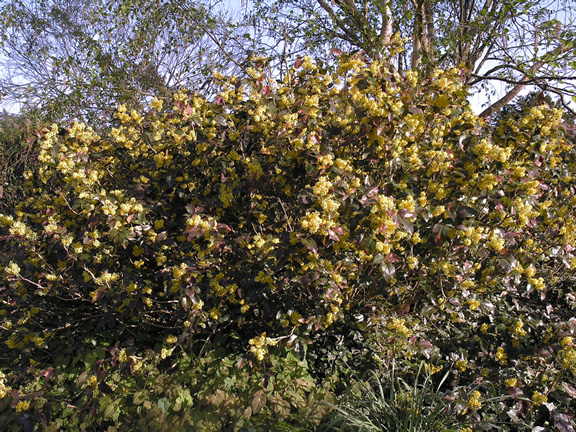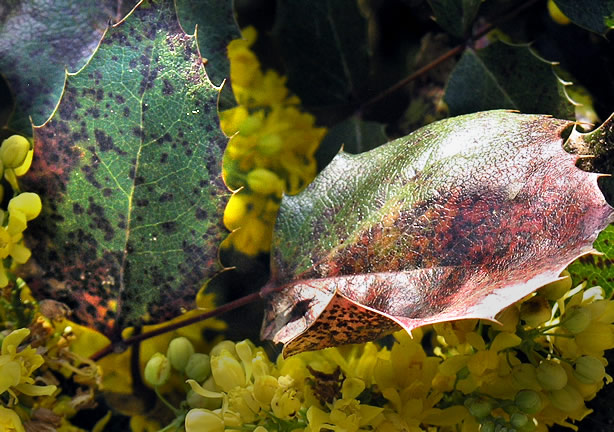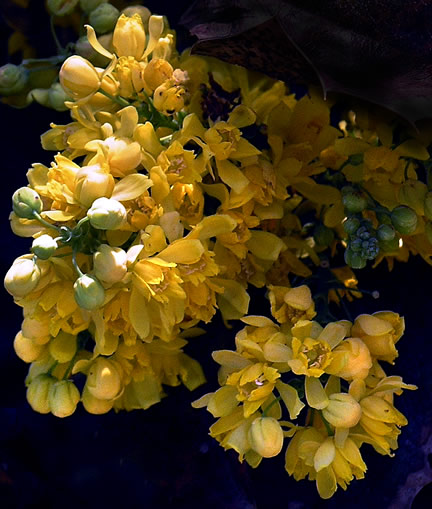| General Description | Berberis aquifolium 'Apollo' or Apollo Oregon Grape is a hardy, ground-covering shrub bearing large, voluptuous clusters of yellow flowers in spring and summer and blackish-purple, edible fruit in autumn. |
| ID Characteristic | In spring and summer leaves are glossy dark green and spine-toothed; flower clusters are vibrant yellow. In autumn, stems turn purple and bear clusters of dark blue almost back berries. |
| Landscape | Used mainly as ground cover. Also can be placed on banks and slopes since it needs little moisture. It will attract wildlife such as birds, butterflies and bees. Also does well in residential and commercial locations, parks and coastal areas. |
| Propagation | By grafting, layering or hard wood cuttings. Roots require soaking prior to planting. Plant cuttings twice as deep as their length. Add a handful of bone meal to promote growth. Can also be propagated from seed after being eaten by birds or scarification. |
| Cultivation | Grow in shade, in well drained soil. Moderate tolerance to salt. Needs very little water; very heat and cold resistant. |
| Pests | Possible problems include: gall and scale insects, rust and powdery mildew. Flowers and fruit may attract unwanted wildlife. |
| Notable Specimens | Royal Botanical Gardens, Burlington, Ontario, Canada. |
| Habitat | Near woods and bush lands, in oak and conifer forests and on mountain slopes. |
| Bark/Stem Description | Red and corklike, somewhat irregular, covered with scars from foliage and flower buds. |
| Flower/Leaf Bud Description | Leaf buds are 5 mm in diameter and flower buds are larger, brown and terminal. Each appears in early spring. |
| Leaf Description | Glossy, leathery, dark green, pinnate, spine-toothed, up to 20 cm long, glossy purple in winter. |
| Flower Description | Small, vibrant yellow, in large, dense clusters. |
| Fruit Description | Berry-like, blackish-purple, clustered. Berries are edible and can be made into jam. |
| Colour Description | Dark green leaves in spring and summer, turning purple in autumn and winter. Stems are red throughout all seasons. Flowers are vibrant yellow turning into blackish-purple berries. |



